Juniper scaly "Meyeri": description, rules of planting and care

Scaly juniper is a perfect plant for decorating plots. Due to its good adaptability to any climatic conditions and decorative appearance, it can be used for the construction of beautiful landscape compositions. But first you need to learn how to grow an exotic shrub.
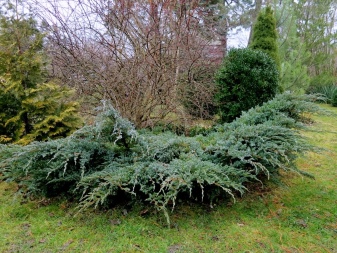
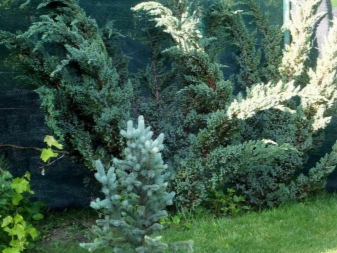
Description
Juniper scaly "Meyeri" - a ground cover plant belonging to the Cypress family.
The variety has a number of distinctive features.
- The irregular shape of its crown, which stretches for 3–3.5 m, can be described as bowl-shaped. It is formed by side branches, which also make the juniper look like a fountain with cascading streams of water.
- An adult culture reaches a height of no more than 70 cm.
- The shrub grows slowly, its annual growth is about 10-12 cm.
- The twigs of the plant are flexible, densely set with green needles. As they grow older, their color darkens, the size of the spiny needles in length is 10 mm.
- The unusualness of the juniper lies in the fact that at the end of spring, the color of the crown becomes silvery-blue due to the active growth of young branches.
- The roots of the plant are well developed, located in the upper layer of the soil, as in most conifers.
- The fruits of the shrub are single-seeded cones of a dark gray color with a bluish-whitish tinge.
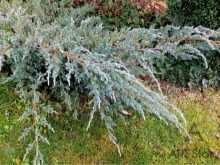
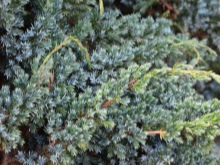
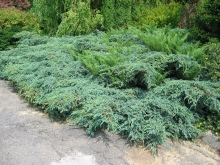
This variety became the ancestor of other types of juniper, such as the Blue Carpet and Blue Star.
It is also a kind of "Meyeri Compact", which is loved by many gardeners - a half-meter high winter-hardy plant with soft blue needles.
It is not for nothing that the juniper has a stunted spreading shape: it is hardly susceptible to arid climate and windy weather. It can be grown everywhere due to its unpretentious content. The plant is resistant to frost, and in the south it can be left without shelter for the winter, but in the northern regions and the Middle Lane "Meyeri" needs protection from too low subzero temperatures.
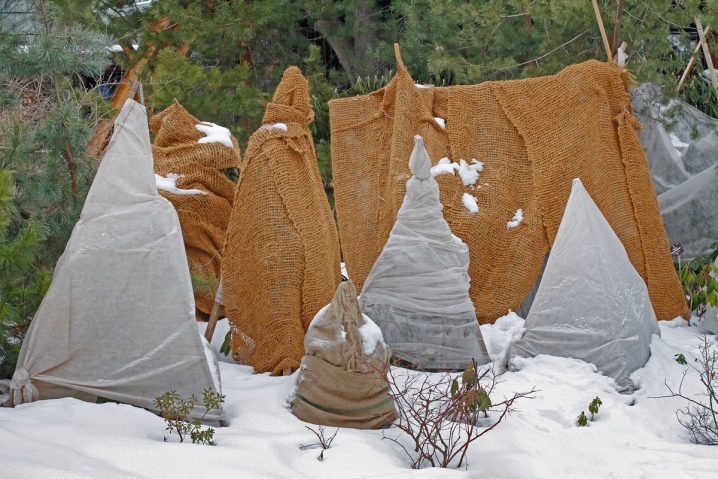
Landing rules
If there is no juniper on the site, its seedlings can be purchased at a garden center or a specialized farm.
When buying, it is important to inspect the plant:
- a healthy seedling has a uniform bark color, there is no damage on it;
- the branches should be green, without yellowness, spots, especially fungus and insects;
- a high-quality shoot has a straight trunk;
- it is important that the roots are branched, with a clod of earth placed in a container or packed in burlap;
- the suitable age for the seedling is 2–4 years.
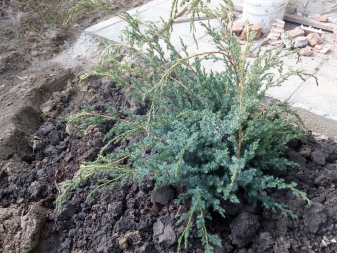
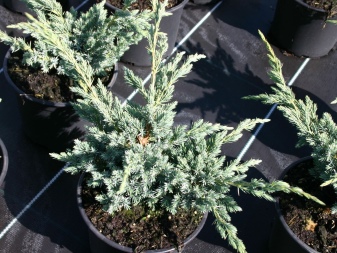
Scaly juniper should be planted to open sunny areas, since the shadow makes the crown lose the beautiful color of the needles. Moreover, in dark places (with a lack of lighting), the aboveground part is capable of thinning, and the bark becomes bumpy.
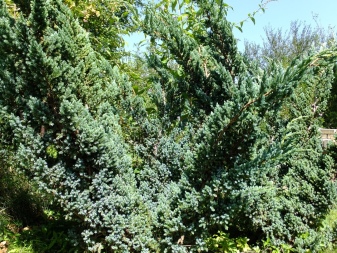
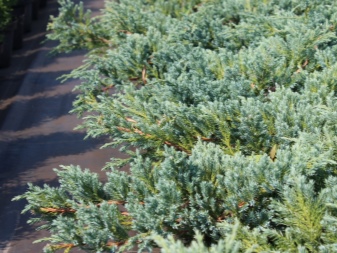
Despite the simplicity of the composition of the earth, best of all, the plant takes root and grows on fertile, slightly acidic soils, loose, with good drainage, excluding stagnant water. Two weeks before planting, the selected area is weeded from weeds, peat, coarse sand and coniferous litter are added to the clay soil.

After that, you need to dig up the ground and level its surface.
For a successful planting, it is important to fulfill the basic requirements associated with this process.
- The depth of the planting hole is made larger than the size of the earthen coma (about 60 cm). In width, it should exceed its volume by 2 times.
- The drainage layer is 15 cm deep. Expanded clay, pebbles, broken brick with sand are used as materials.
- The soil mixture is poured over the drainage to half the ditch.
- Before planting a juniper, its root system is placed in a growth stimulant solution.
- In the middle of the hole, the seedling is lowered with an earthen clod, spreading its roots. Sprinkle with earth in layers, carefully compacting each of them.
- The root collar is positioned in line with the ground surface.
- When planting a group of plants, a distance of 1.5–2 m is left between the pits.
- Then you need to generously water the seedling: at least 5 liters of water are poured under one bush.
- Mulching with pine bark, peat and sawdust is carried out in order to prevent the soil from drying out, and, consequently, the roots.
- It is important to protect young unrooted bushes from the damaging sun, so they are shaded at first.
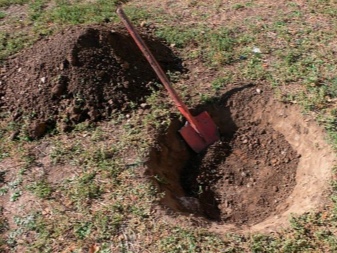

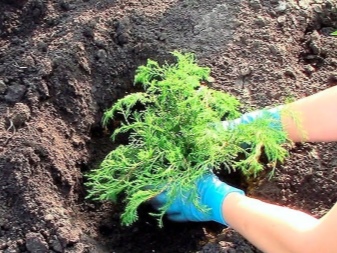
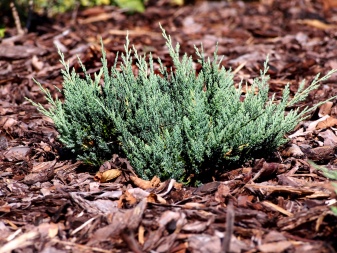
It is recommended to land in open ground in April or early May when the weather is warm (with a plus temperature of at least +10 degrees), when the ground has time to warm up.
Care features
Juniper "Meyeri" is not too whimsical, and it is not difficult to take care of it, but all the necessary procedures must be carried out in a timely manner.

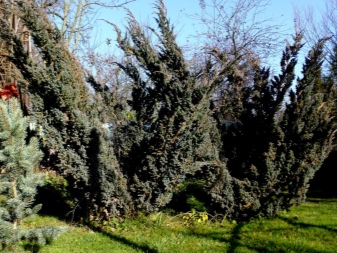
Watering the plant
The first irrigation after planting is carried out after the soil of the trunk circle has dried, it is important to moisten the soil 5–6 m deep. In the future, moderate watering is required, depending on the weather conditions. In the summer, once a week, you need to sprinkle the crown of a juniper 2 times a day, this is done in the early morning and after sunset. For watering adult plants, you will need a bucket of warm water, settled for 2-3 days.
After each moistening, weeds are removed, the surface layer is loosened and the area near the trunk is mulched with chips, sawdust or peat in a layer of 5–6 cm.
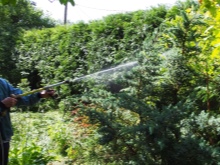
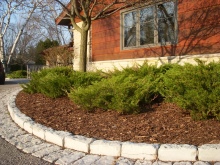
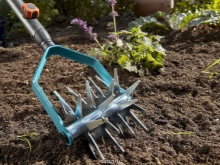
Fertilizing the soil
Young plants do not need feeding during the year. Fertilizers can be applied next spring - until the buds swell. Adult shrubs are fertilized 2 times every 12 months: in spring and autumn. In the spring, use liquid nitrogen compounds or urea (at the rate of 20 grams per bucket of water). This procedure helps the juniper grow actively and enlarge the crown.
Required in autumn phosphorus-potassium agents (saltpeter and "Superphosphate"), helping to strengthen the immunity of plants before the coming winter. Water the soil under each bush no later than 30 days before frost.


Spring pruning
There is no need to form the crown of the plant, but if desired, it is still allowed to do it. But you can shorten the branches only by 1/3 of their length. Basically, on spring days, they are engaged in sanitary cutting, removing diseased, dead and frozen branches in winter.
Slices must be coated with "Bordeaux liquid" or "Copper sulfate", and then the bush is treated with an antifungal drug.
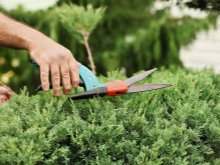

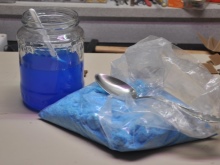
Winter shelter
Adult junipers in a warm region do not need shelter, but they have rather flexible branches that can bend under the snow mass. To prevent this from happening, they are tied together.
Young plants need protection from cold weather and sunlight. For 3 years after planting, they need to be covered:
- agricultural canvas, leaving small gaps for air;
- pine spruce branches, protecting the branches from strong gusts of wind;
- a specially constructed structure, on top of which snow is placed.
There is another option, if the climatic conditions are different, especially in the harsh winter: the culture can be dug up, moved to a spacious container and kept indoors with cool air until spring.
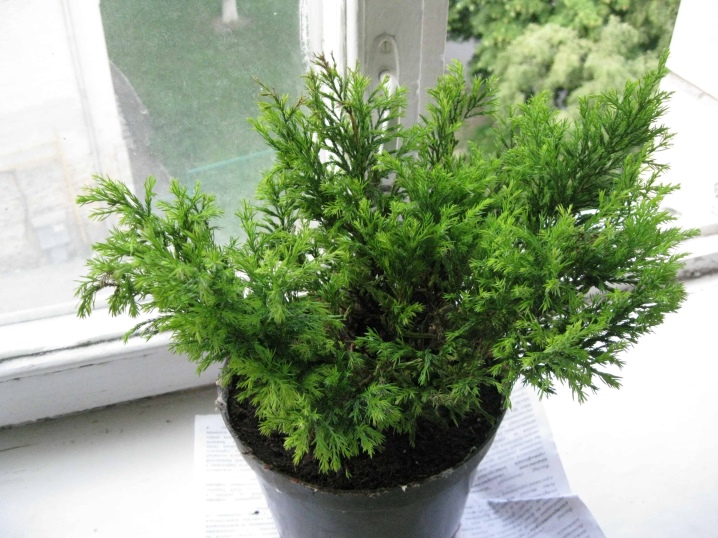
Diseases and pests
The plant is highly resistant to various ailments, but it can get sick if the care requirements are not met.
Rust is one of these troubles, it is caused by the pathogenic fungal microorganism Gymnosporangium and is manifested by growths of brown and dirty red colors. If such symptoms occur, you must immediately remove the affected parts of the shrub and spray it and the soil with special agents or copper sulfate.
Most fungal diseases are provoked waterlogged soil, lack of lighting and planting several plants too close. As a rule, the needles of the juniper turn yellow.
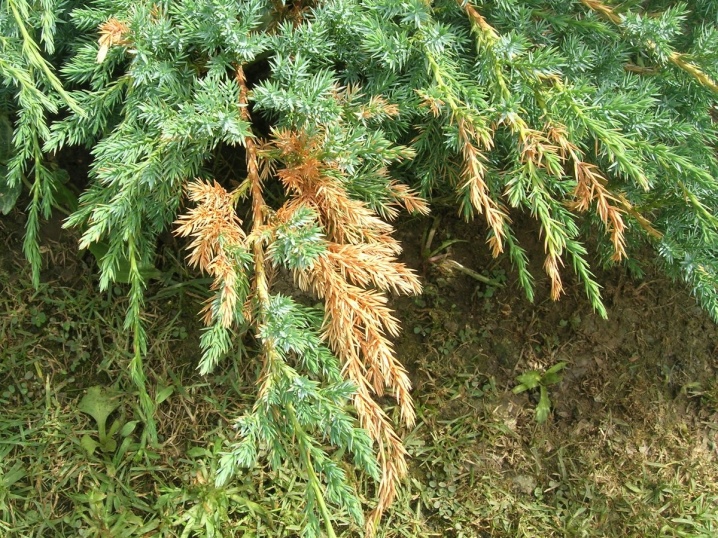
But sometimes this is caused by aphids, which feed on plant juices. The parasite can be eliminated by spraying with the Iskra anti-pest composition; with a large number of insects, you will have to use Karbofos.
Infection with a scabbard can slow down the development of the bush, and its growth will stop. If you do not treat the crown with insecticides ("Aktara", "Calypso", "Confidorom Extra") in time, the juniper may die.
Also, the shrub is susceptible to damage by a spider mite and a sawfly, the vital activity of parasites leads to drying out of young branches, falling off needles. In the fight against these pests, funds will help Aktara, Fufanon, Aktellik.



Reproduction
For landing, you can use your own planting material. Seeds are the least suitable for this., since the processing and growing of seedlings take a long time, while in most cases the percentage of obtaining a quality plant with all varietal characteristics is too small.
You can graft a shrub, but basically this breeding method is associated with the breeding of the most valuable varieties. A more suitable technique is grafting, when young branches with a "heel" are taken for planting. But the simplest option is use of layering. To do this, the lower branches are fixed and buried in the ground, and after rooting, they are separated from the mother bush.
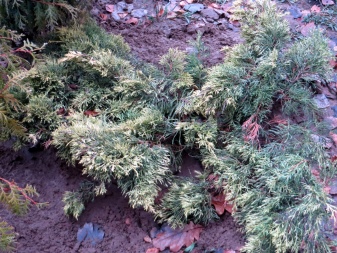
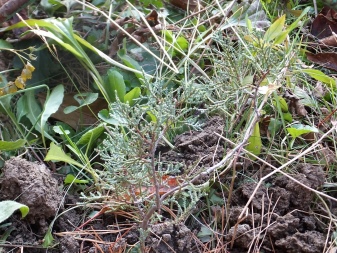
Examples in landscape design
The Meyeri variety was developed for landscaping gardens and parks, and it is still in demand when creating spectacular ensembles in combination with spruces, pines, and other types of junipers.
Scope of use:
- the culture can be planted in places that need to be masked due to unsightly;
- the plant is often used for park alleys;
- it is placed in groups with tall evergreen rocks;
- Juniper can accentuate the beauty of bright, large flowers, including peonies, roses and dahlias;
- with the help of culture, you can create multi-level gardens and flower beds;
- "Meyeri" looks organically with cereals, mosses, the same ground cover varieties planted nearby, and also with flowers, herbs and stones;
- scaly juniper fits into an ensemble of small, undersized conifers and flowers.
In other words, ornamental shrub looks equally impressive in different garden design options. In addition, it is known that Meyeri can be used both as a container plant and to create bonsai.

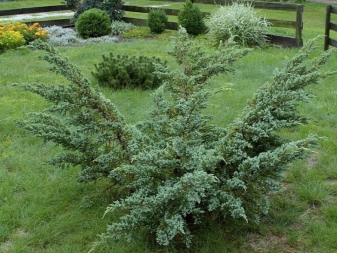
How to plant Meyeri juniper, see below.



































































The comment was sent successfully.